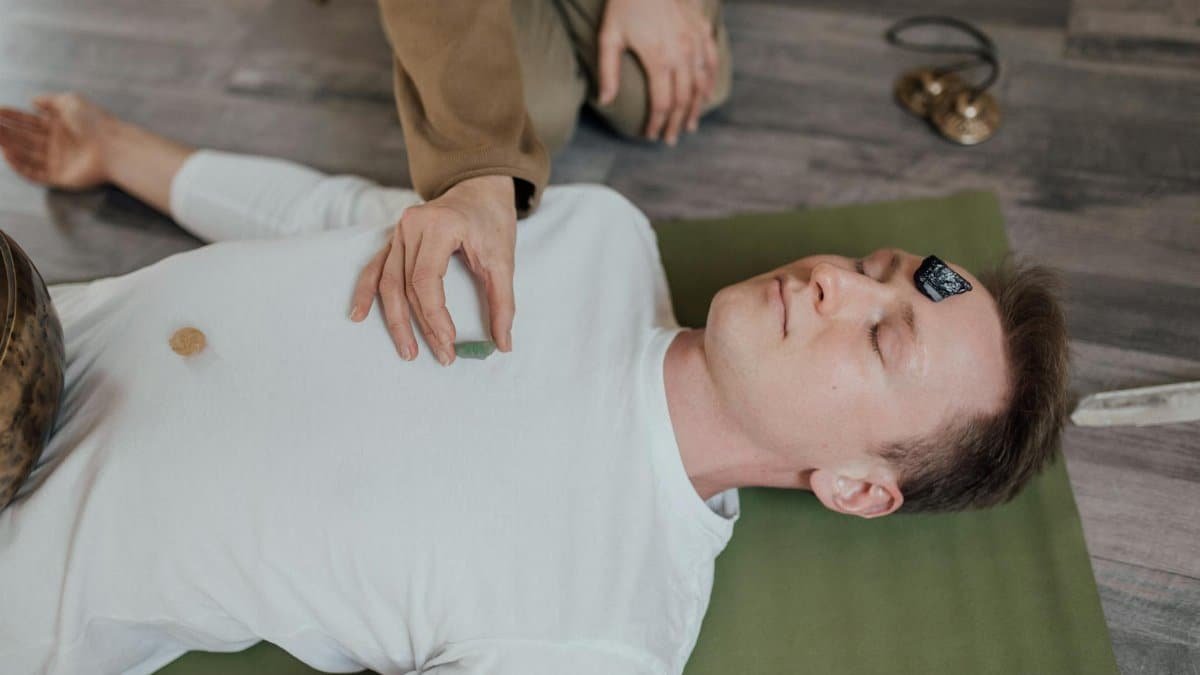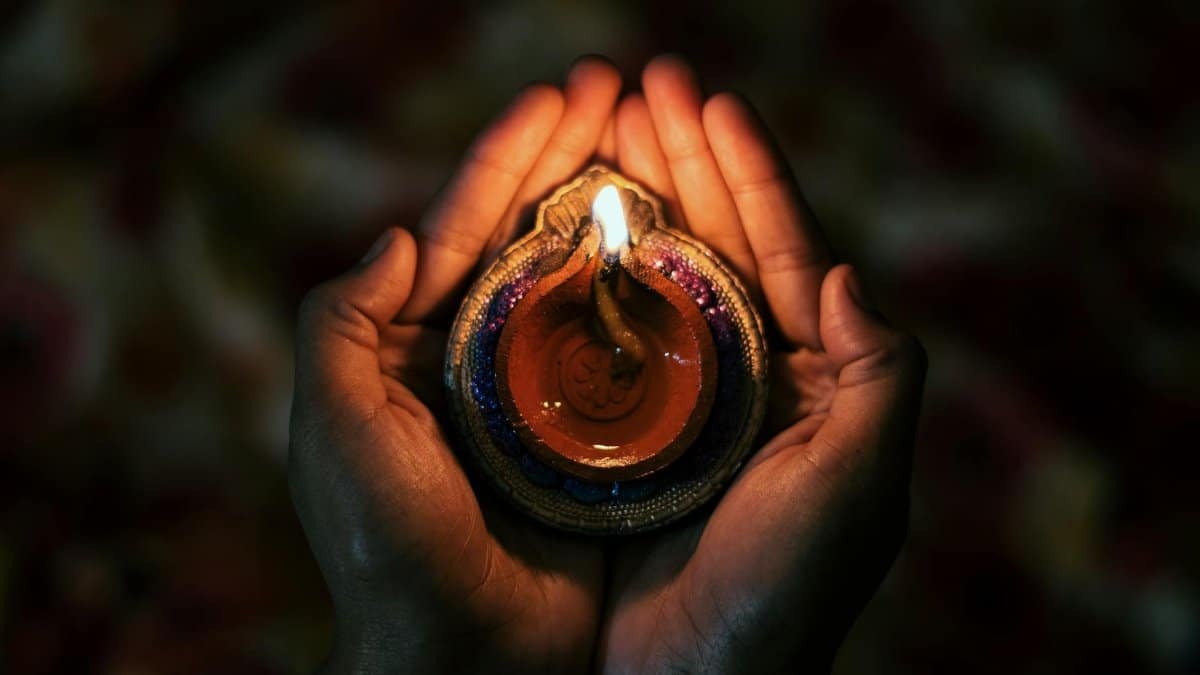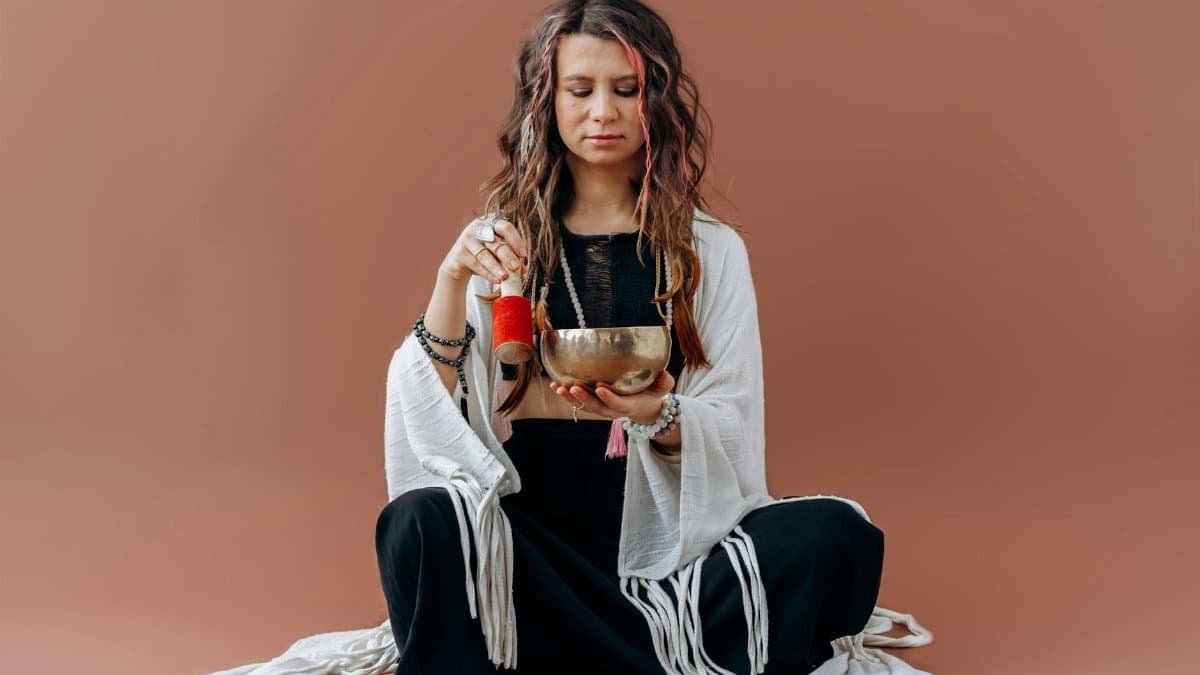In cities like Seattle and Austin, where the pace of life often feels relentless, a quiet movement is gaining ground. Wellness studios and community centers are filling up with workshops on reiki rituals, drawing in middle-aged professionals seeking solace from daily stresses. This isn’t just a fleeting trend; it’s a response to the mounting pressures of work, family, and an always-on digital world. Reiki, a Japanese healing practice that channels energy through gentle touch or intention, has evolved into personalized rituals that promise inner peace. As Americans grapple with anxiety levels that have spiked in recent years, these rituals offer a grounded way to reconnect with oneself. In this piece, we’ll explore six such reiki rituals designed to foster tranquility, starting with one that specifically calms the mind. Each draws from traditional reiki principles while adapting to modern life, backed by insights from practitioners and emerging research.
1. Grounding Breath Alignment

Imagine starting your day not with a hurried coffee run, but with a simple act of intentional breathing. This first reiki ritual focuses on aligning your breath with the earth’s energy, a practice that many describe as an anchor in stormy seas. Begin by sitting comfortably, feet flat on the ground, and placing your hands over your heart. Inhale deeply, visualizing a warm light flowing from the earth up through your body. Exhale, releasing tension. Reiki master teachers often emphasize this as a foundational step, drawing from the system’s origins in early 20th-century Japan.
One woman in her forties, juggling a corporate job and parenting, shared how this ritual transformed her mornings. “It was like flipping a switch,” she recalled, her voice steady over a virtual call. Before, anxiety would build like a gathering storm; now, ten minutes of this practice sets a calmer tone. Research supports such benefits. A study from the National Institutes of Health highlights how mindfulness-based practices, including energy work like reiki, can reduce stress hormones. NCCIH on Reiki notes its potential in complementary health approaches.
Yet, it’s not without its nuances. Some find the visualization challenging at first, their minds wandering like leaves in the wind. That’s okay; reiki rituals thrive on patience. Over time, this alignment not only calms the mind but also builds resilience, making it easier to navigate unexpected challenges. In 2025, with remote work still blurring boundaries, rituals like this could become even more essential for maintaining mental clarity.
2. Chakra Balancing Flow

Energy centers, or chakras, play a pivotal role in reiki philosophy, and this ritual targets them directly for emotional equilibrium. Picture a gentle sequence where you hover your hands over each chakra point, starting from the root at the base of your spine and moving upward. Intone a soft hum or affirmation with each one—something like “I am secure” for the root. This flow isn’t about dramatic gestures; it’s subtle, almost meditative, allowing energy to realign naturally.
Practitioners across the U.S. report profound shifts from this practice. In a bustling Chicago wellness group, participants often emerge from sessions with brighter eyes and lighter steps. One anonymous account from an online forum described it vividly: feeling a knot of worry in the solar plexus dissolve, replaced by a sense of empowerment. It’s these personal stories that bring reiki rituals to life, showing their impact beyond theory.
Delving deeper, evidence from institutions like Harvard Medical School suggests that energy-based therapies can influence the autonomic nervous system, promoting relaxation. A linked review in their health publications explores this. Harvard Health on Reiki. However, skeptics point out the placebo effect, a tension that adds complexity to the conversation. Still, for those seeking peace, this ritual offers a tangible tool, adaptable to solo evenings or group settings, fostering a deeper connection to one’s inner landscape.
As we consider broader trends, this chakra-focused approach resonates in an era where mental health awareness is at an all-time high. It’s not a cure-all, but a complementary path, weaving ancient wisdom into contemporary routines.
3. Self-Healing Hand Positions

Reiki’s core involves self-treatment through specific hand placements, and this ritual adapts that for peace-building. Lie down or sit quietly, then methodically place your hands on areas like the head, throat, and abdomen, holding each for three to five minutes. Feel the warmth build, intending to release stored tensions. It’s a ritual that demands nothing but time and presence, making it accessible even for beginners.
Think of a retired teacher in Florida who turned to this after years of burnout. Her days once overflowed with lesson plans and grading; now, this practice carves out space for reflection. “The heat from my own hands surprises me every time,” she said, illustrating how reiki rituals can evoke wonder. Such anecdotes highlight the ritual’s power to soothe, turning inward focus into a form of self-compassion.
Supporting data comes from the Mayo Clinic, which acknowledges reiki’s role in stress reduction and pain management. Their integrative medicine section provides overviews. Mayo Clinic on Reiki. Of course, integration with conventional care is key, as reiki isn’t a standalone medical solution. This balance underscores the ritual’s place in holistic wellness, especially as more Americans explore alternative therapies in 2025.
Varying the routine—perhaps adding essential oils or soft music—keeps it fresh, preventing it from feeling rote. The result? A calmer nervous system, ready to face life’s ebbs and flows with greater ease.
4. Intention-Setting Meditation

At the heart of many reiki rituals lies intention, and this one pairs it with meditation for profound peace. Start by choosing a clear intention, like “I release fear,” then enter a meditative state with reiki symbols visualized or drawn in the air. Allow energy to amplify your words, sitting in stillness for 15 minutes. It’s less about force and more about gentle invitation.
A narrative from a New York-based accountant reveals its subtlety. Amid tax season frenzy, he adopted this ritual, finding that intentions set in the morning carried through chaotic days. “It’s like planting a seed,” he explained, his experience mirroring a common thread in reiki communities. These stories add texture, showing how rituals adapt to urban pressures.
Research from the University of California, San Francisco, on mind-body interventions backs this up, linking intention-focused practices to improved emotional regulation. Their Osher Center for Integrative Medicine offers detailed insights. UCSF Osher Center on Reiki. Yet, challenges arise when distractions pull focus, a reminder that consistency builds efficacy. In weaving this into daily life, one discovers layers of calm previously untapped.
5. Nature Connection Ritual

Blending reiki with the outdoors, this ritual invites you to connect with nature’s energy. Find a quiet spot in a park or backyard, ground yourself, and extend reiki energy to a tree or the soil, then receive it back. It’s a reciprocal exchange, emphasizing unity with the environment for inner harmony.
Consider a group in Portland who gathers weekly for this. Laughter mixes with silence as hands touch bark, participants reporting a wash of serenity. One described it as “borrowing peace from the earth,” a poetic yet practical takeaway. Such communal elements enrich reiki rituals, fostering bonds alongside personal growth.
Studies from the National Center for Complementary and Integrative Health affirm nature-based therapies’ benefits for mental health. NCCIH on Mind-Body Approaches. Tensions emerge in urban settings with limited green space, yet adaptations like houseplants work wonders. This ritual, evolving with 2025’s emphasis on sustainability, bridges personal peace with planetary awareness.
Over repeated sessions, it cultivates a deeper appreciation for subtle energies, turning routine walks into opportunities for renewal.
6. Evening Release Ceremony

Ending the day with intention, this ritual involves a ceremonial release of accumulated stresses. Light a candle, perform reiki hand positions while reflecting on the day’s events, and visualize letting go. Conclude with gratitude, extinguishing the flame as a symbol of closure.
In a quiet suburb outside Denver, a book club incorporated this, members sharing how it improved sleep. “Nights used to replay worries; now, they’re a clean slate,” one noted. These glimpses into real lives underscore reiki rituals’ transformative potential.
Evidence from Pew Research on wellness trends shows rising interest in such practices among adults. While not directly on reiki, their reports on spirituality align. Pew Research on Spirituality. Critiques question measurability, but personal efficacy often trumps data. As we navigate 2025’s uncertainties, this ceremony provides a ritualistic anchor, promoting restful nights and brighter tomorrows.
Ultimately, these six reiki rituals form a toolkit for peace, each building on the last to create lasting calm. They invite exploration, adaptation, and a gentle return to balance in an often turbulent world.
